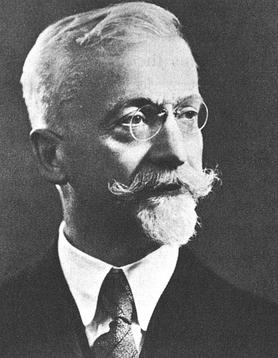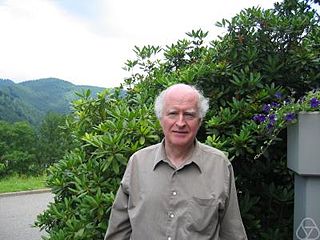
In mathematics, a dynamical system is a system in which a function describes the time dependence of a point in an ambient space, such as in a parametric curve. Examples include the mathematical models that describe the swinging of a clock pendulum, the flow of water in a pipe, the random motion of particles in the air, and the number of fish each springtime in a lake. The most general definition unifies several concepts in mathematics such as ordinary differential equations and ergodic theory by allowing different choices of the space and how time is measured. Time can be measured by integers, by real or complex numbers or can be a more general algebraic object, losing the memory of its physical origin, and the space may be a manifold or simply a set, without the need of a smooth space-time structure defined on it.

In vector calculus and physics, a vector field is an assignment of a vector to each point in a space, most commonly Euclidean space . A vector field on a plane can be visualized as a collection of arrows with given magnitudes and directions, each attached to a point on the plane. Vector fields are often used to model, for example, the speed and direction of a moving fluid throughout three dimensional space, such as the wind, or the strength and direction of some force, such as the magnetic or gravitational force, as it changes from one point to another point.
In mathematics, complex geometry is the study of geometric structures and constructions arising out of, or described by, the complex numbers. In particular, complex geometry is concerned with the study of spaces such as complex manifolds and complex algebraic varieties, functions of several complex variables, and holomorphic constructions such as holomorphic vector bundles and coherent sheaves. Application of transcendental methods to algebraic geometry falls in this category, together with more geometric aspects of complex analysis.
In mathematics, specifically in homology theory and algebraic topology, cohomology is a general term for a sequence of abelian groups, usually one associated with a topological space, often defined from a cochain complex. Cohomology can be viewed as a method of assigning richer algebraic invariants to a space than homology. Some versions of cohomology arise by dualizing the construction of homology. In other words, cochains are functions on the group of chains in homology theory.
In mathematics and physics, a tensor field assigns a tensor to each point of a mathematical space. Tensor fields are used in differential geometry, algebraic geometry, general relativity, in the analysis of stress and strain in materials, and in numerous applications in the physical sciences. As a tensor is a generalization of a scalar and a vector, a tensor field is a generalization of a scalar field or vector field that assigns, respectively, a scalar or vector to each point of space. If a tensor A is defined on a vector fields set X(M) over a module M, we call A a tensor field on M.

Symplectic geometry is a branch of differential geometry and differential topology that studies symplectic manifolds; that is, differentiable manifolds equipped with a closed, nondegenerate 2-form. Symplectic geometry has its origins in the Hamiltonian formulation of classical mechanics where the phase space of certain classical systems takes on the structure of a symplectic manifold.

Élie Joseph Cartan was an influential French mathematician who did fundamental work in the theory of Lie groups, differential systems, and differential geometry. He also made significant contributions to general relativity and indirectly to quantum mechanics. He is widely regarded as one of the greatest mathematicians of the twentieth century.

In mathematics, contact geometry is the study of a geometric structure on smooth manifolds given by a hyperplane distribution in the tangent bundle satisfying a condition called 'complete non-integrability'. Equivalently, such a distribution may be given as the kernel of a differential one-form, and the non-integrability condition translates into a maximal non-degeneracy condition on the form. These conditions are opposite to two equivalent conditions for 'complete integrability' of a hyperplane distribution, i.e. that it be tangent to a codimension one foliation on the manifold, whose equivalence is the content of the Frobenius theorem.
In mathematics, singularity theory studies spaces that are almost manifolds, but not quite. A string can serve as an example of a one-dimensional manifold, if one neglects its thickness. A singularity can be made by balling it up, dropping it on the floor, and flattening it. In some places the flat string will cross itself in an approximate "X" shape. The points on the floor where it does this are one kind of singularity, the double point: one bit of the floor corresponds to more than one bit of string. Perhaps the string will also touch itself without crossing, like an underlined "U". This is another kind of singularity. Unlike the double point, it is not stable, in the sense that a small push will lift the bottom of the "U" away from the "underline".
In mathematics and classical mechanics, canonical coordinates are sets of coordinates on phase space which can be used to describe a physical system at any given point in time. Canonical coordinates are used in the Hamiltonian formulation of classical mechanics. A closely related concept also appears in quantum mechanics; see the Stone–von Neumann theorem and canonical commutation relations for details.
In mathematics, the complex projective plane, usually denoted P2(C), is the two-dimensional complex projective space. It is a complex manifold of complex dimension 2, described by three complex coordinates
In mathematics, specifically linear algebra, a degenerate bilinear formf (x, y ) on a vector space V is a bilinear form such that the map from V to V∗ (the dual space of V ) given by v ↦ (x ↦ f (x, v )) is not an isomorphism. An equivalent definition when V is finite-dimensional is that it has a non-trivial kernel: there exist some non-zero x in V such that

In the mathematical field of algebraic geometry, a singular point of an algebraic varietyV is a point P that is 'special', in the geometric sense that at this point the tangent space at the variety may not be regularly defined. In case of varieties defined over the reals, this notion generalizes the notion of local non-flatness. A point of an algebraic variety that is not singular is said to be regular. An algebraic variety that has no singular point is said to be non-singular or smooth.

John Norman Mather was a mathematician at Princeton University known for his work on singularity theory and Hamiltonian dynamics. He was descended from Atherton Mather (1663–1734), a cousin of Cotton Mather. His early work dealt with the stability of smooth mappings between smooth manifolds of dimensions n and p. He determined the precise dimensions (n,p) for which smooth mappings are stable with respect to smooth equivalence by diffeomorphisms of the source and target.

In mathematics, a manifold is a topological space that locally resembles Euclidean space near each point. More precisely, an -dimensional manifold, or -manifold for short, is a topological space with the property that each point has a neighborhood that is homeomorphic to an open subset of -dimensional Euclidean space.

In mathematics, and in particular the study of dynamical systems, the idea of stable and unstable sets or stable and unstable manifolds give a formal mathematical definition to the general notions embodied in the idea of an attractor or repellor. In the case of hyperbolic dynamics, the corresponding notion is that of the hyperbolic set.
In mathematics, a conservative system is a dynamical system which stands in contrast to a dissipative system. Roughly speaking, such systems have no friction or other mechanism to dissipate the dynamics, and thus, their phase space does not shrink over time. Precisely speaking, they are those dynamical systems that have a null wandering set: under time evolution, no portion of the phase space ever "wanders away", never to be returned to or revisited. Alternately, conservative systems are those to which the Poincaré recurrence theorem applies. An important special case of conservative systems are the measure-preserving dynamical systems.
Polyhedral space is a certain metric space. A (Euclidean) polyhedral space is a simplicial complex in which every simplex has a flat metric.. In the sequel all polyhedral spaces are taken to be Euclidean polyhedral spaces.

In physics, the Painlevé conjecture is a theorem about singularities among the solutions to the n-body problem: there are noncollision singularities for n ≥ 4.
Richard Paul McGehee is an American mathematician, who works on dynamical systems with special emphasis on celestial mechanics.









